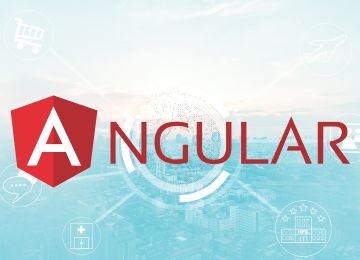
Dot Net online training in Hyderabad India
Microsoft .NET (pronounced "dot net") is a comprehensive, open-source developer platform created by Microsoft for building a wide range of applications, including web, mobile, desktop, gaming, and IoT (Internet of Things) solutions. It consists of the .NET Runtime, which provides a managed execution environment, and the Base Class Library (BCL), offering a rich set of APIs for common tasks. .NET supports multiple programming languages, notably C#, F#, and Visual Basic, and includes specialized frameworks such as ASP.NET for web applications, Xamarin/MAUI for mobile development, and WinForms and WPF for Windows desktop applications.
SNS Tech Academy is acclaimed for providing the best .NET online training in Hyderabad, India, specializing in comprehensive courses that include ASP.NET, C#.NET, and ADO.NET. Their meticulously designed curriculum ensures that students master the core aspects of .NET development, equipping them with the skills to build robust web applications, efficient desktop applications, and seamless database interactions. The academy's experienced instructors bring industry insights into the virtual classroom, fostering a practical learning environment through real-world projects and interactive sessions. The flexibility of online training allows students to learn at their own pace, making it convenient for working professionals and full-time students alike. By focusing on both theoretical knowledge and practical skills, SNS Tech Academy prepares its graduates to excel in the competitive tech industry, providing them with the tools and support needed to achieve their career aspirations.
Dot Net Online Training course content :-
C#.Net Course Content
C# Language Fundamentals- Structure of a C# Program
- Basic Input/output Operations
- Commenting a Program
- Recommended Practices
- Naming Variables
- Best Practices for Naming Conventions
- Using Built-In Data Types
- Creating User-Defined Data Types
- Converting Data Types
- Typecasting
- Boxing and Un-boxing data types
- Introduction to Statements
- Using Selection Statements
- Using Iteration Statements
- Using Jump Statements
- Using Conditional Statements
- Applications Based on All Statements
- Understanding Namespaces
- Understanding Scope Resolution
- Defining Classes
- Instantiating and Working with Objects
- Difference between Abstraction and Encapsulation
- Understanding and Implementing Encapsulation
- Defining Object-Oriented Systems
- Implementing Properties in C#
- String Handling
- The String and String Builder Class
- Different Methods and Properties of String and String Builder Class
- Arrays
- Overview of Arrays
- Creating and using Single Dimension and Multi Dimension Arrays
- Using foreach Loop
- Using Methods
- Using Parameters
- Passing value type parameters
- Passing Reference types(string, Array, object) as parameters
- Passing Parameters using Ref and Out keyword
- Static and Instance Members
- Explaining Constant and ReadOnly
- Using Constructors
- Using Initializer Lists
- Initializing Data
- Deriving classes
- Understanding Type Hierarchy
- Hiding Base Class Member in Derived Class
- Implementing Multi Level Inheritance
- Using base keyword
- Using Static Classes
- Access Modifiers in C#
- Default Accessibility Level for Class, Methods and Structures
- Constructor Execution Sequence in Inheritance Scenario
- Default Constructor and Parameterized Constructor
- Constructor in Structure in C#
- Calling Base Class Constructor in Derived Class Constructor
- Using this keyword to Call One Constructor by another Constructor
- Discussing Public, Private and Protected Constructor
- Understanding Static Constructor
- Differentiating Static Constructor and Instance Constructor by call Mechanism
- Implementing Singleton Design Pattern and Understanding Static Class
- Polymorphism Using Methods
- Overloading a Method
- Overriding Virtual Method
- Abstract Class and Abstract Method
- Interface Implementation
- Interface Inheritance and Implementation
- Using Sealed Class and Sealed Method
- Discussed Inheritance and Interface Implementation in Structure
- Discussion to Differentiate Virtual Method
- Visual Studio .NET Debugging Environment
- Using Debugging tool provided by IDE
- Checked and Unchecked Statements
- Try, Catch and Finally
- Dos and Don’ts of Exception Handling
- Understanding Collection
- Using Different Collections viz. ArrayList, Stack, Queue, SortedList
- Understanding Different Interface viz. IEnumerable, IEnumerator, IComparable, IComparer, IList,
- Hashing Mechanism
- Generic Collection Classes
- Creating and using Delegates
- Multicast Delegates
- Anonymous Method
- When to Use Delegates, Events and Interfaces
- Covariance and Contravariance in Delegates
- Generic Delegates
- Implementing Polymorphism Using Delegates
- Defining and using Events
- Creating a Windows Form
- Windows Form Controls
- Writing Code for Control Events
- Understanding Delegates and Events Implemented in windows Forms
- Writing a Common Method Called for Click Event of Multiple Buttons
Asp.Net Course Content
INTRODUCTION- Basics
- Web Programming
- HTML, DHTML
- JavaScript
- IIS
- ASP
- Difference Between ASP and ASP.NET
- Architecture
- Inline Technique & Code-Behind Technique
- Code Render Blocks
- Server Controls
- Page Basics, Page lifecycle
- Post back Request
- View State, Directives
- Html Server Controls
- Web Server Controls
- Basic Web Controls
- List Controls, Data Controls
- Adv Controls, User Controls
THEMES AND SKINS
MASTERPAGES AND SITE NAVIGATION
XML PROGRAMMING
XML
- DTDs & XSDs
- Parsers
- SAX Model
- DOM Model
- XML Programming in .Net
- XML Readers
- XML Serialization
- Context
- View State
- Cookie State
- Session State
- Session Tracking
- Application Object
- Session and Application Events
- Machine.Config & Web.Config.
- App Setting
- Compilation Settings
- Custom Error Settings
- Session State Settings
- InProcess & OutProcess Sesstion States
- State Server & SQL Server
- Cookieless Session State
- Application and Global.ASAX
- Introduction to Caching
- Types of Caching
- Page Caching
- Diff. between Webuser Controls & Custom Controls
- Page fragmentation Caching
- Data Caching
- Data Caching – Application Object
- Page Level
- Application Level
- Authentication & Authorization
- Windows Authentications
- Forms Authentications
- Passport Authentications
- Memberships
- Architecture
- WSDL, SOAP, UDDI
- Publishing and Consuming Web Services
- Web Client
- Windows Client
- Caching Web Services
- Security in Web Services
- Webpart Manager
- Zone Types
ADO.Net Course Content
ADO.NET PROGRAMMING- Architecture
- DataReaders and DataSets
- Command Object
- Transaction Programming
- Procedure Execution
- Data Adapter and Data Set
- Data Tables
- Data Relation
- Data Views
- Updating Dataset
- Working with Data Controls
- GridView-Inserting, Updating, Deleting
- -Sorting in Data Grid
- -Paging in Data Grid
- DataSource Controls
- Dataset
- DetailsView
- FormView
- Data List
- Repeater Control
- Crystal Reports
- XML, XML to HTML, XML & Databases
- XML Schema Definition Tool
- Overview of ADO.NET/ XML Support in .NET
- Connect/Insert/Update/Delete,Query data -using ADO.NET
- Retrieve data with datasets
- Data Adapters, Understanding Data tables
- Build Data table programmatically
- Filter and sort Data table, Data Relations
- ADO.NET LINQ
- Parameters with Command Object
- Stored Procedures with ADO.NET using –output parameters
- Develop a Registration form using ADO
- ASP.Net bound controls
- DataSource Controls
- Repeater & its uses.
- DataBound and DataAware Controls
- Bind data to Dropdownlist Control
- Datalist control
- GridView & its importance in Development
- GridView(Basic) – simple uses
- GridView (Advanced) –Runtime Fields, Empty DataRows,
- FormView & DetailsView
- ListView
Unmanaged code is code that is executed directly by the operating system. It is written in languages such as C or C++ and does not provide the benefits offered by the CLR. Unmanaged code must handle its own memory management and security.
1)Simple and easy to learn: C# syntax is clean and straightforward.
2) Object-oriented: C# supports encapsulation, inheritance, and polymorphism.
3)Type-safe: C# prevents type errors and improves code stability.
4)Scalable and updateable: It is suitable for large-scale applications.
5)Interoperable: C# supports interoperability with other languages and can call unmanaged code.
6)Component-oriented: It supports the development of self-contained, reusable components.
1) Can have implementations for some of its members (methods, properties, etc.).
2) Can contain constructors.
3) Can have access modifiers for its members.
4) A class can inherit only one abstract class.
Interface:
1) Cannot have any implementations for its members.
2) Cannot contain constructors.
3) All members are public by default.
4) A class can implement multiple interfaces.

















